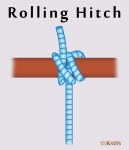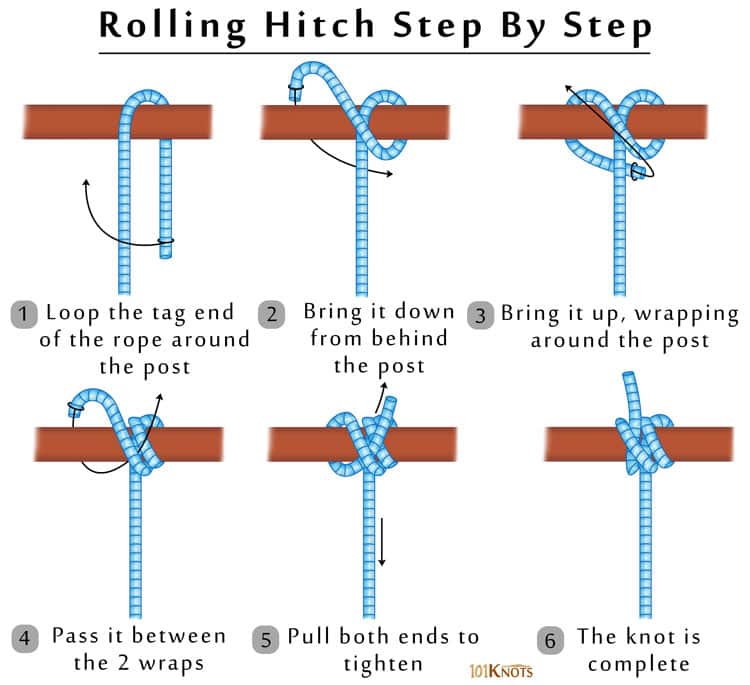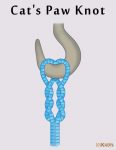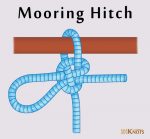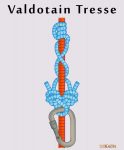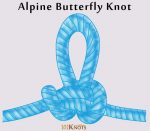Rolling Hitch
Definition
The rolling hitch is a friction knot that can attach a thinner rope to a thicker one or a single rope to a post or spar. It holds firmly in the direction of the standing part. It belongs to the group of slide and grip knots and facilitates lengthwise pulls on it. Until 1841 it was known as Magnus or Magner’s hitch. At that time the name rolling hitch was applied to round turn and two half hitches. In that year, Richard Dana published a book, The Seaman’s Friend, and named the knot as we know it today.
How to Tie a Rolling Hitch Knot
Tips
- As some of the modern ropes are very slippery, a rolling hitch would not hold to them.
- If you want, you can back it up by two half hitches.
- Note the formation of a half hitch in step 4.
Variations
- Rolling hitch on a bight – If there is a long tail end, you can make the knot with a bight instead of an end.
- Modified rolling hitch – It is used in orthopedic practices.
Advantages | Disadvantages |
| Secure and easy | Not secure enough for climbing purposes |
Rolling Hitch v/s Other Knots
- Clove hitch – It is weaker. Unlike the rolling hitch, it works well when the load is applied perpendicular to the support.
- Taut line hitch – Forms an adjustable loop.
- Anchor bend – Specifically attaches a line to an anchor or any other ring-shaped structure.
Uses
- To clear a jammed block or winch by releasing the pressure off the line.
- Sailing and scouting.
- To pull up hoses in fire service.
- For hauling tools aloft in construction work and arboriculture.
- To secure a snubber to an anchor chain.
How to Tie a Rolling Hitch – Video Tutorial
How to Tie a Rolling Hitch Knot Step by Step
- Loop the tag end of the rope around the post
- Bring it down from behind the post
- Bring it up, wrapping around the post
- Pass it between the 2 wraps
- Pull both ends to tighten
- The knot is complete

